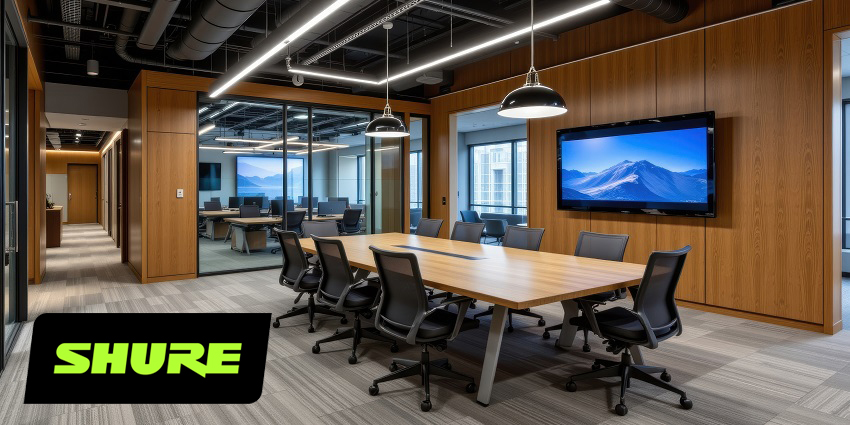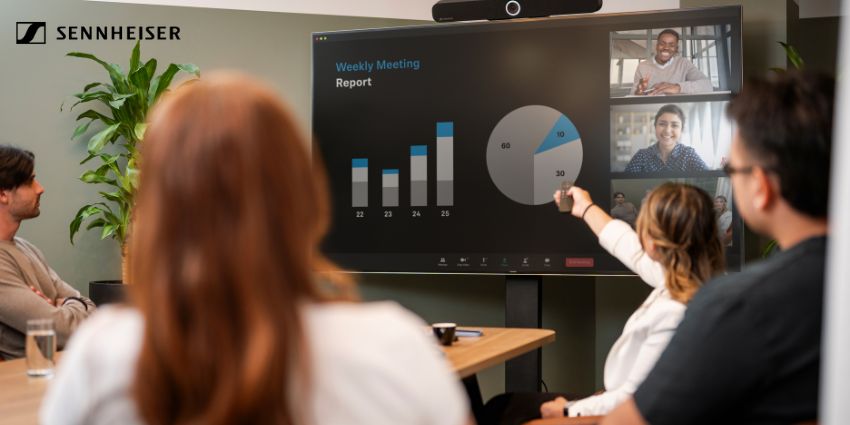As enterprises redefine their office environments to embrace hybrid and flexible working models, meeting spaces are being fundamentally redesigned to align with new collaboration needs.
However, this workplace transformation demands more than just new furniture layouts; it requires a complete rethinking of collaboration technology strategy.
Yet, in efforts to optimize each individual space for maximum performance, many organizations have inadvertently created a web of complexity that undermines the very collaboration benefits they sought to achieve.
What began as a strategic push toward enhanced hybrid working has resulted in fragmented systems, inconsistent user experiences, and management overhead that consumes valuable IT resources.
But what if the solution lies not in selecting the best hardware for each room, but in adopting a unified platform approach that leverages software intelligence to optimize performance across all collaboration environments?
The Hidden Costs of Room-by-Room Technology
The journey toward optimized meeting spaces typically begins with admirable intentions.
Organizations conduct thorough assessments of their diverse room types: executive boardrooms requiring premium audio and video quality, large conference areas needing flexible audio pickup, and intimate huddle spaces demanding simple plug-and-play functionality.
The seemingly logical response involves selecting specialized solutions for each environment, leading to procurement decisions that prioritize individual room needs over organizational coherence. This approach appears cost-effective initially, as teams can point to specific features that justify each technology choice.
Yet this fragmented strategy introduces cascading operational complexities that far exceed initial cost savings. IT teams find themselves managing relationships with multiple vendors, each bringing distinct escalation procedures, maintenance schedules, and technical requirements.
Equally, the security implications compound these challenges significantly. Each vendor’s system demands separate security frameworks, update schedules, and monitoring procedures. When critical security patches are released, IT teams must coordinate updates across multiple platforms with varying maintenance windows and compatibility requirements.
But perhaps most critically, this multi-vendor approach undermines the human-centric design principles that should guide modern workplace technology. Employees face a cognitive burden of learning, and remembering, different interfaces depending on which room they enter. Remote participants may also experience inconsistent audio and video quality that varies dramatically based on each room’s particular equipment mix. This not only affects attendee comprehension, but the maximization of any AI investment like Copilot from being able to accurately transcribe that conversation.
This inconsistency directly contradicts the seamless collaboration experience that hybrid working models require. When employees can’t confidently operate meeting technology regardless of location, it defeats the flexibility that modern workspaces are designed to provide.
Standardization: The Foundation for Flexible Hybrid Workspaces
Dealing with these fragmentation issues, it is clear that a standardization strategy can not only eliminate the headache multi-vendor setups cause but also enhance a company’s use of its AV solutions.
Effective standardization in collaboration technology extends far beyond simply purchasing from a single vendor, however. It creates an operational foundation that enables true workspace flexibility while maintaining the consistency that hybrid working models demand.
When organizations deploy unified, flexible platforms across all meeting spaces, they gain the agility to rapidly reconfigure rooms based on evolving hybrid work patterns without starting from scratch.
Consider a company that needs to transform large conference rooms into multiple smaller collaboration spaces during busy periods or adapt spaces for different team sizes as hybrid attendance patterns shift.
With modular, software-driven technology, IT teams can quickly redeploy equipment while maintaining identical user interfaces, management protocols, and security standards across all new configurations. This means room audio dynamics can be optimized in minutes rather than requiring extensive reconfiguration or additional training.
This consistency becomes crucial for workforce mobility in hybrid environments. Employees who master collaboration tools in one space can immediately operate them effectively in any other room, regardless of size or complexity.
Security management also becomes significantly more streamlined under standardized approaches. Rather than juggling multiple vendor security frameworks with varying vulnerability profiles, IT teams monitor and maintain unified protocols across all systems. When security patches or updates are required, they deploy uniformly rather than coordinating different procedures for each equipment type.
Modern ecosystem solutions also enable deployment capabilities that make hybrid workspace setup dramatically easier. Features like zero-touch provisioning and auto-configuration allow IT generalists to quickly deliver complete room solutions across diverse workspaces with professional-grade performance, bypassing the traditional complexities associated with AV installations that often delay hybrid workspace rollouts.
Building Future-Ready Collaboration Infrastructure
The path toward efficient, hybrid collaboration requires a fundamental shift from hardware-centric thinking to platform-based approaches that prioritize software intelligence and adaptability.
This transformation enables organizations to respond quickly to changing collaboration needs without disruptive technology overhauls.
Cloud-based management becomes essential for this approach, enabling centralized visibility, plug-in solutions, and control across all endpoints regardless of their physical location.
Plus, this approach of building from the inside out future-proofs companies to be able to scale with the rapid technological change currently being seen with things like AI. Rather than facing costly replacements every few years, organizations can utilize scalable, upgradeable technology ecosystems that integrate new features and innovations through software updates and incremental hardware enhancements.
All this begins with selecting technology partners who offer comprehensive, certified ecosystems rather than point solutions.
Shure IntelliMix: Unified Solutions for Hybrid Workspace Success
Shure’s IntelliMix Collaboration Solutions directly address these hybrid workspace challenges through a comprehensive approach built on a single technology platform. Rather than forcing organizations to navigate multi-vendor complexity, Shure offers a unified ecosystem that delivers both consistency and flexibility across all collaboration environments.
The IntelliMix portfolio tackles fragmentation through two complementary, certified solutions: IntelliMix Room Kits provide straightforward deployment across small, medium, and large spaces, while the IntelliMix Foundation System paired with the versatile Microflex Ecosystem addresses more complex integration needs.
Both operate on the same underlying platform, ensuring consistency while providing the adaptability that diverse room configurations require.
Instead of managing multiple vendor relationships with different escalation procedures and maintenance schedules, IT teams work with Shure’s comprehensive platform supported through ShureCloud‘s centralized management portal.
Security updates, monitoring, and troubleshooting become streamlined processes rather than complex coordination exercises across disparate systems, enabling organization-wide rollouts and observability.
Plus, the consistent, high-quality sound capture that IntelliMix solutions provide ensures that AI features like real-time transcription, intelligent summaries, and automated action items perform at full potential across every meeting space.
As collaboration needs change, the platform adapts through software updates and incremental hardware enhancements rather than requiring costly complete overhauls.
Organizations seeking to escape fragmentation while building future-ready hybrid workspaces don’t need to sacrifice performance for simplicity.
Shure’s IntelliMix Collaboration Solutions demonstrate that standardization enhances collaboration, providing the unified foundation that successful hybrid work environments require to harness their technology and their people.







